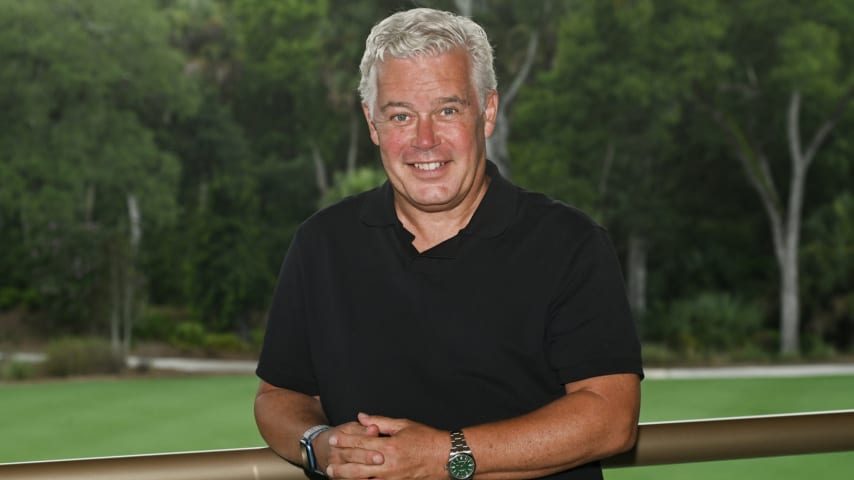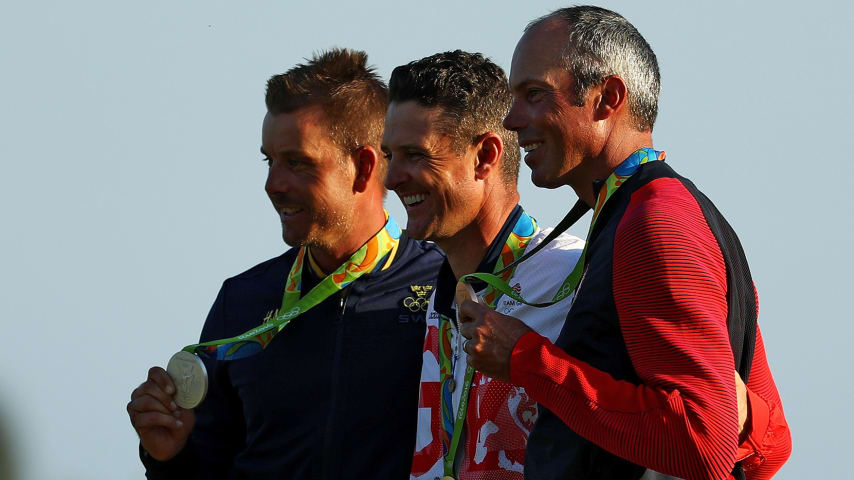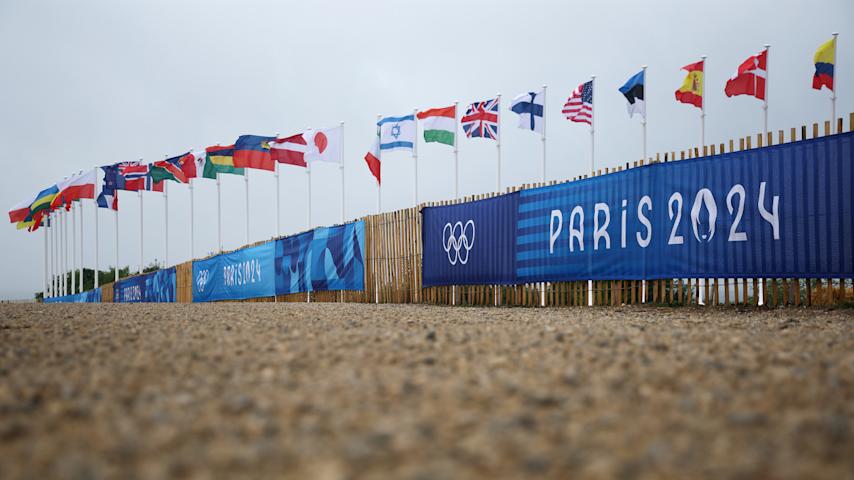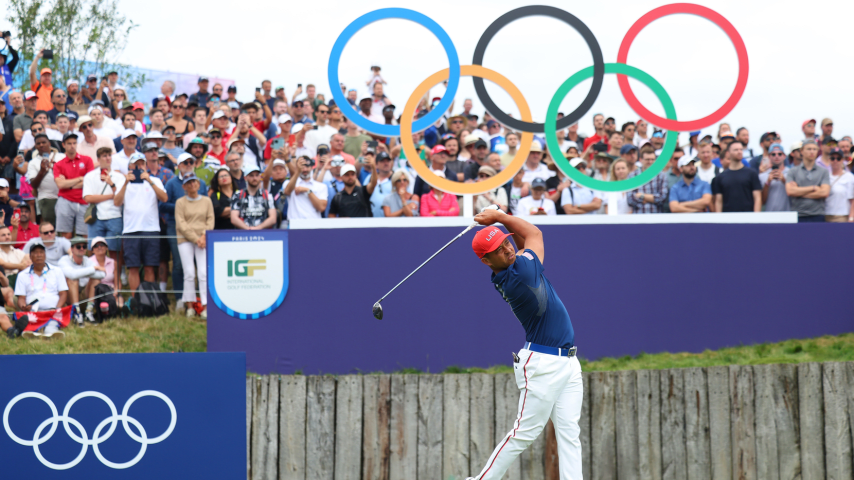Golf’s return to the Games: Two weeks of Olympic competition and lasting legacy
6 Min Read

Ty Votaw on unpredictability of getting golf into Olympics
Written by Ty Votaw
Editor’s note: After all the efforts to get golf into the Olympics and then to go through the travails of getting a golf course built in Rio de Janeiro, it was finally time for the 2016 Games themselves. In the third and final installment of this series, former International Golf Federation Executive Director Ty Votaw remembers the two 72-hole tournaments and the legacy the Olympic Golf Course and the competitions left behind.
The men’s golf competition of the XXXI Olympiad was underway, and I was walking the golf course without a real viewing strategy. I wasn’t following anybody in particular, and truthfully, I was simply soaking in the atmosphere.
After a long journey that began in 2008, where getting golf added as an Olympic sport was at that point simply a dream, the IOC not only voted golf into the Olympics, but also golf was actually in the Olympics.
There was a tournament proving that fact right in front of our eyes, and sell-out crowds were there to witness it.
In some ways it was hard to believe that the golf course on which we were walking was, just a few years earlier, nothing more than a mangrove forest in a sandy, sometimes marshy landscape.
From the minute I became involved in the effort to get golf added to the Olympic program in 2008, we pointed to this exact moment – the actual Olympic competitions, played over a nine-day period in mid-August.

A photo of former PGA TOUR Executive Vice President Ty Votaw. (Chris Condon/PGA TOUR)
I proudly viewed the 120 athletes who represented their countries in the men’s and women’s competitions, and it was apparent to see how much national pride and their involvement in their first Olympics meant to them.
Seeing golfers Siddikur Rahman of Bangladesh and Paraguay’s Julieta Granada as the flag-bearers during the Opening Ceremony, leading in their country’s athletes during the Parade of Nations, was compelling.
I remember seeing American golfer Rickie Fowler get his photo taken with fellow Olympian Michael Phelps. And while sitting in the Olympic Stadium for the opening ceremony, I watched Justin Rose walk beside tennis player Andy Murray as part of the Great Britain contingent.
Some golfers were worldwide celebrities, while others were not as well-known even in their own countries. But they were all Olympians.
Leading into the Games, we faced challenges. The Zika virus, a mosquito-borne infection, scared away a few athletes from competing. We also had some security and crime concerns that were part of the discussions with some players as to whether they would travel to Brazil. By the Games’ end, though, none of those issues seemed to matter.
When I finally left Rio at the conclusion of the golf competitions, I had many thoughts. Three specifically stood out.
On the final day of the women’s competition, Russia’s Maria Verchenova shot a best-of-the-Olympics 62. She didn’t medal, but of all the rounds played during the Olympics, her 9-under 62 was the lowest. The fact she was from Russia demonstrated, even in a small way, what we had been saying all along: Golf is a global game, and it does not matter from which country you come.
I also thought about the six medalists. Justin Rose (Great Britain) and Inbee Park (South Korea) winning gold, Henrik Stenson (Sweden) and Lydia Ko (New Zealand) earning silver and Matt Kuchar (United States) and Shanshan Feng (China) taking home bronze. What’s unique about that? Six medalists from six different countries.

Justin Rose (C) of Great Britain celebrates with the gold medal, along with Henrik Stenson (L) of Sweden, silver medal, and Matt Kuchar of the United States, bronze medal, at the 2016 Olympic Games. (Scott Halleran/Getty Images)
Of the top-10 female finishers, there were nine countries represented. Only South Korea, with Park and Amy Yang, who finished fourth, had two players in that group. In the men’s competition, two countries – the United States and Spain – had two players among the top nine. What that showed was that golf talent isn’t concentrated to a few select areas of the world.
Since 2016, numerous countries have seen their golf participation rates rise, just as the national federations predicted would happen if golf became an Olympic sport. There were 116 IGF members when golf made it into the Olympics in 2009. Now there are 152 different federations devoted strictly to golf.
All those things are evidence that what we thought was the case going into the Games ultimately turned out to be true. We found a way to grow the sport around the world, and it was the Olympics and golf as a part of the program that contributed to that growth.
My final key thought centered on the golf course itself and what its legacy will be. Eight years after those 2016 Games, the Olympic Golf Course is the only facility built specifically for those Olympics that is still in operation. All the other venues created for the Games are long gone or no longer used for their designed purposes.
The players embraced the course and seemed to really enjoy it. At one of Rose’s press conferences, he talked about what a fun course it was to play and praised the job Gil Hanse and his team did with the design, knowing wind would be a factor. Alena Sharp from Canada noted the trickiness of the greens and offered how deceptive they could be. The consensus from the athletes was that it was a difficult course that provided a fair test. That’s exactly what we hoped to hear.
The legacy of the Olympic Golf Course is something that all of us associated with getting golf into the Olympics are especially proud. There were so many voices arguing that building a golf course was a monumental waste of money, that the course would end up getting bulldozed at the Games’ conclusion. The fact that none of that happened is truly gratifying.

Ty Votaw on how Paris Olympics will be special
The 63rd playing of the Brazil Open took place at the Olympic Golf Course a month after the Olympics ended, with current Korn Ferry Tour member, Argentina’s Jorge Fernández Valdés, winning. It was the first of two consecutive Brazil Opens at the facility. Earlier this year, Brazil’s national open returned to the Olympic Golf Course as part of the inaugural PGA TOUR Americas schedule, with Canadian Matthew Anderson capturing the title.
There is also a growing junior program at the facility, and it’s the only public course in Rio, open to anybody who wants to play golf.
All the predictions of the course’s demise, something that certainly could have happened but didn’t, speak to what our sport and a first-class facility can do for not just a neighborhood, not just a city but a country. That creates an enormous amount of pride for me.
As Rose was sinking the putt that won him the gold medal on that August afternoon in 2016, I surprisingly found myself getting emotional. From the start, our group’s goal was to have a successful bid and, ultimately, a successful presentation of our sport. We had done that. I was a bit overcome.
As I watched my partner, Peter Dawson, handle the medal presentations, I became nostalgic. Dawson, a stiff-upper-lip Brit, and I had traveled together for 18 months, trying to convince the IOC to allow golf into the Games. Then we had an additional seven years together, overseeing the construction of the course and preparing for 2016. It was an eventful ride, some of it more fun than others. I realized our journey together was drawing to a close.
Once the ceremony ended and people began leaving the course. I sought out Dawson. I had tears in my eyes as we approached. He did, too.












